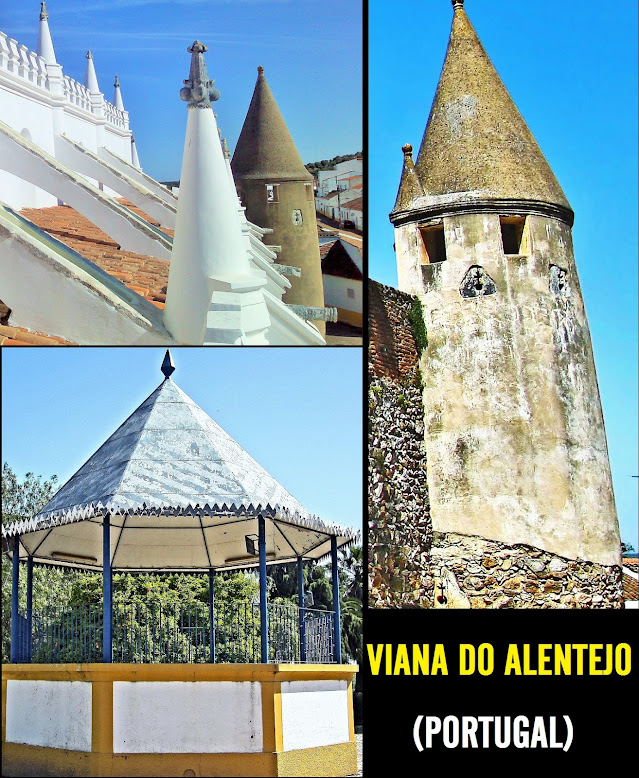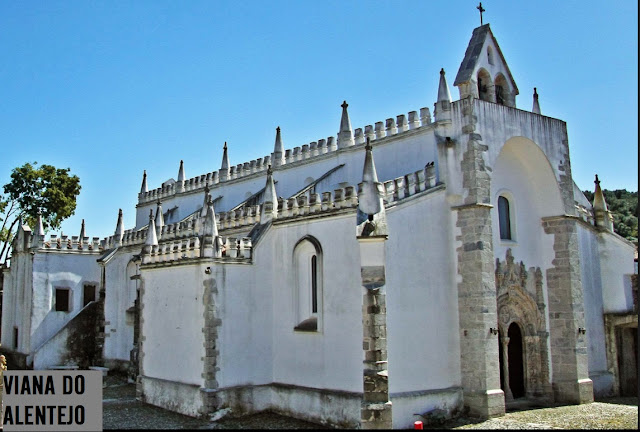VIANA DO ALENTEJO
8º 20' 03'' N; 8º 00' 05'' W
The municipality of Viana do Alentejo is one of the seven remaining in Portugal where the traditional animal bells, the rattle art, are made. These bells, known as rattles, were added to UNESCO's list of intangible cultural heritage, in urgent need of conservation, in 2015.
The place already existed at the time of the Roman province of Lusitania and existed until the end of the Moorish domain. After its extensive destruction during the Reconquest, it was repopulated in the 13th century. Ceramics generated an economic development, mainly from the 17th century.
Viana do Alentejo is the administrative headquarters of the municipality with the same name. The neighboring areas are (starting clockwise to the north): Montemor-o-Novo, Évora, Portel, Cuba, Alvito, and Alcácer do Sal.
In the municipality of Viana do Alentejo are the following parishes: Aguiar, Alcáçovas and Viana do Alentejo.
Viana do Alentejo is a stop on the Alentejo Railway Line. The station is just outside the city.
In this place, national roads 254, 257, 383, and 384 cross, through which Viana is connected to Portel 30 km to the east and its connection to IP2 (here also the European route 802).
SANCTUARY OF OUR LADY OF AIRES.
This sanctuary, in Baroque style, started in 1743 and was completed, roughly, in 1792, and it is already at the end of the 18th and during the 19th century that the interior of the temple receives the pictorial decoration of the nave and the main chapel and ornamental stucco work.
The interior of the sanctuary combines the Latin cross with the central chancel. This is flanked by opulent columns of green marble, surmounted by an octagonal dome, and has, in the center, a magnificent canopy carved in gilt. This imposing rococo retable structure was commissioned in 1757.
Raquel Seixas describes the process by which the baroque aesthetic of Frederico Ludovice, coming from the palace-convent of Mafra and from the cathedral of Evora, was transferred to the sanctuary of Viana do Alentejo, in the primacy given to the marbles of the presbytery, as unifying and structuring elements of the internal space, and in the dome.
João Frederico Ludovice was a renowned German architect and goldsmith who worked in Portugal in the 18th century, for the kings D. Pedro II and D. João V, and who was the author of the layout of the palace of Mafra and of the main chapel of the Sé de Évora. At the Cathedral of Evora, the author of the risk of the sanctuary of Aires, who will have worked there, and the master-builder of the same, who worked there, will have been influenced by the same aesthetics.
In the surroundings of the sanctuary are the old pilgrim houses and the old Alameda dos Romeiros, today very disfigured, but it is still possible to observe the fence, the old house of the hermit, the old dormitories, and the old stables. A few meters away is the fountain of Nossa Senhora de Aires.
💓💓💓💓💓
SEARCH IN ALPHABETICAL ORDER
IN THE DISTRICT OF ÉVORA

Mora;
💓💓💓💓💓
Return to mainland Portugal &
the Azores and Madeira islands





















































